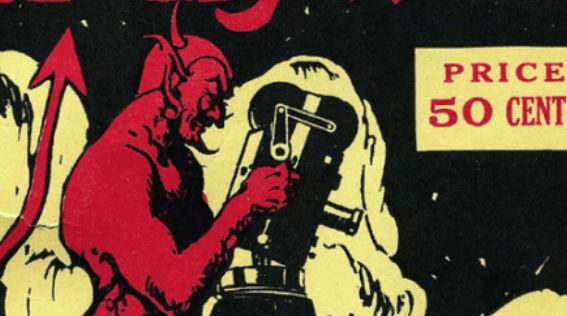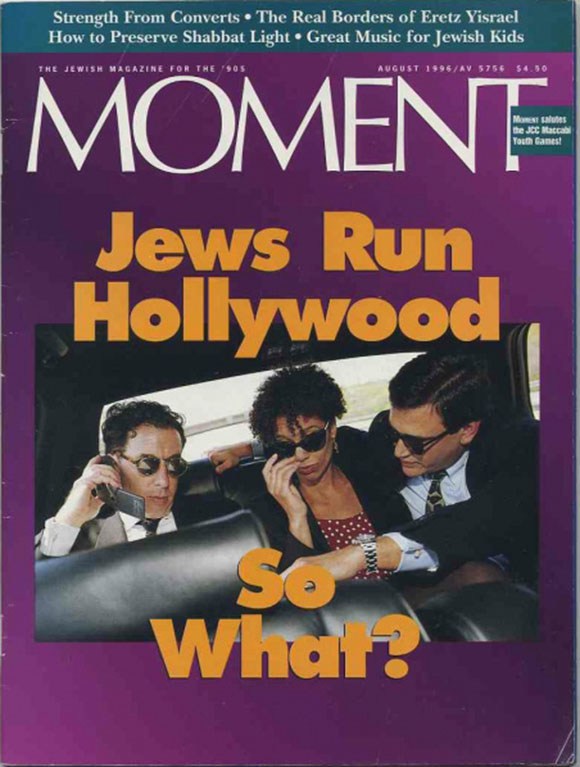Benjamin Garland
Daily Stormer
April 15, 2017
Part 1, Part 2, Part 3, Part 4, Part 5, Part 6, Part 7, Part 9
“As soon as the Jew gained control of the ‘movies,’ we had a movie problem, the consequences of which are not yet visible. It is the genius of that race to create problems of a moral character in whatever business they achieve a majority.” – Henry Ford1
The movie industry, according to film historian Robert Sklar, was “completely in the hands of respectable, established Anglo-Saxon Protestant Americans,” before Jewish immigrants began taking it over in 1911.2
By 1915, the Jew Carl Laemmle had crushed all of his competitors using every dirty trick at his disposal, and had become head of the largest studio, Universal.
“From this point on,” Neal Gabler writes in An Empire of Their Own: How the Jews Invented Hollywood, “the Jews would control the movies.”3
There was great concern over the potential harm that movies could do to public morality from the very beginning. In the same year that the Jews effectively took over Hollywood, 1915, the Supreme Court denied First Amendment rights to movies with Mutual Film Corporation v. Industrial Commission of Ohio.
This decision gave local censors the right to screen movies before allowing their showing, making film the only medium ever subject to “prior restraint” censorship in the history of America.
“[T]he exhibition of moving pictures is a business, pure and simple,” the court declared.
Acknowledging that motion pictures could be used for good, such as for education, the judges also recognized that they “may be used for evil,” especially since their audiences include not just men and women, but also children.4
The salient aspect of the history of the Jewish domination of our film industry in Hollywood is the lack of any open acknowledgement of the Jews as an ethnic group among their opposition. This is despite it being a well-known, obvious, and despised fact that the Jews were using the movies for ill.
For instance, the 1922 anti-Hollywood pamphlet The Sins of Hollywood – the most popular of its time – describes a movie producer who is preying on a pretty aspiring actress as “small, dark-haired with a bullet head and a low, receding brow” and “a large nose and small ratty eyes.” Along with the suspiciously Yiddish sounding accent he is given, that makes it pretty clear that the character is a Jew, yet he is never explicitly named as such.5
Calling a Jew a Jew was out of the bounds of respectability, apparently, even way back then.
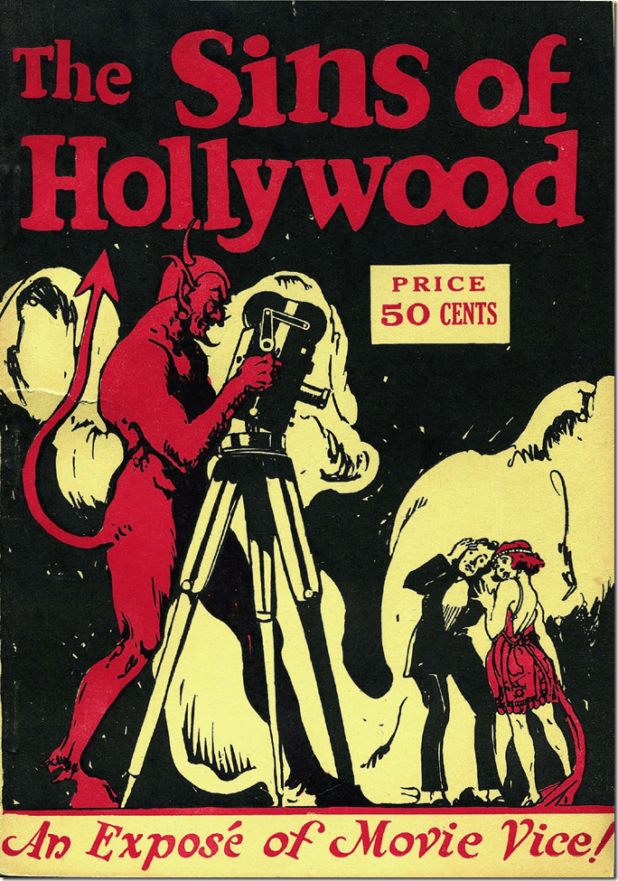
The one prominent American who had courage to come forward and openly name and oppose the Jews was the great industrialist Henry Ford. His newspaper The Dearborn Independent, which he distributed for free to hundreds of thousands of Americans every week, ran a total of ninety-one anti-Semitic articles. Three of them were concerning “Jews and the movies.”
“There is little wisdom in discoursing against evil in the movies and deliberately closing our eyes to the forces behind the evil,” one such article reads.6 “The purpose of this and succeeding articles,” it continues
is not to lift hands in horror and point out how rotten the movies are. Everybody is doing that. The case against the movies is not contested at all. It is unanimous. Women’s clubs, teachers, newspaper editors, police officers, judges of the courts, ministers or religion, physicians, mothers and fathers — everybody knows just what the movies are.
What all these disgusted groups evidently do not know is this: their protests will be entirely useless until they realize that behind the movies there is another group of definite moral and racial complexion . . . they can go on beating the air for a lifetime and still obtain no improvement, unless they face the unpleasant racial fact that the movies are Jewish. It is not a question of morals – that question has been settled; it is a question of management.7
In 1921 alone, there were almost 100 bills introduced in 37 states calling for the regulation of motion pictures.
So in 1922 – the same year as the distribution of both Ford’s articles and the The Sins of Hollywood pamphlet quoted above – the major Hollywood studios hired U.S. Postmaster General Will H. Hayes to head the newly formed Motion Picture Association of America (MPAA), for the purpose of regulating film content in order to prevent a government crackdown.
The MPAA drew up guidelines in the form of “The Formula” in 1924, the “Don’ts and Be Carefuls” in 1927, and finally the “Production Code” in 1930, which was not fully enforced until they hired Joseph Breen and formed the “Production Code Administration,” in 1934.
The period between the writing of the Production Code and its actual enforcement – 1930 to 1934 – is what is known as “Pre-code Hollywood,” during which producers were continuously pushing the moral boundaries of the time.
In response, Catholics formed the Legion of Decency, for the stated purpose of boycotting and condemning “absolutely those salacious motion pictures which, with other degrading agencies, are corrupting public morals and promoting a sex mania in our land.”
The Catholic Legion of Decency’s threat of boycott loomed heavily over the Hollywood Jews. It was no empty threat. On one occasion they organized a protest in Philadelphia and the profits for that city dropped by 40 percent.8
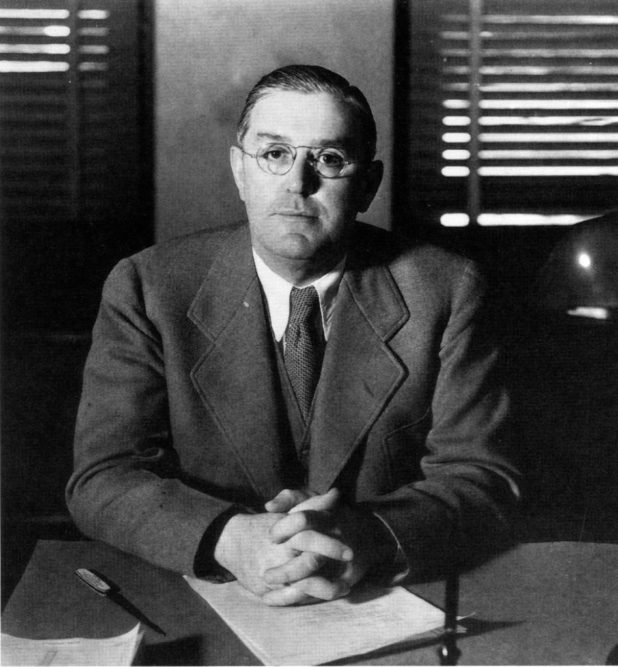 Joseph Breen
Joseph Breen
Breen was a prime example of Ford’s complaint about the futility of people opposing Jewish behavior without ever naming them directly. Breen, according to multiple private correspondences, was an anti-Semite, but he never dared to say it publicly.
In 1932, he wrote to a Jesuit confidant that the Jews are
a rotten bunch of vile people with no respect for anything beyond the making of money. . . . Here [in Hollywood] we have Paganism rampant and in its most virulent form. Drunkenness and debauchery are commonplace. Sexual perversion is rampant . . . any number of our directors and stars are perverts. . . . These Jews seem to think of nothing but making money and sexual indulgence. . . . Ninety-five percent of these folks are Jews of an Eastern European lineage. They are, probably, the scum of the earth.9
He wrote to his assistant, Martin Quigley, that same year: “The fact is that these damn Jews are a dirty, filthy lot.”
Two years later, again in a letter to a Jesuit, while referring to one movie official as “a kike Jew of the very lowest type,” Breen claimed to be the one man “who could cram decent ethics down the throats of the Jews.”10
Breen and the Legion of Decency did in fact effectively rein in the Jews’ racial urge to promote degeneracy and immorality – at least for a time.
The first serious “chink in the Code’s armor,” according to Leonard J. Leff and Jerold L. Simmons, in their history of the Production Code, The Dame in the Kimono, came with the movie The Bicycle Thief, which was imported from Italy by the Jew Joseph Burstyn in 1948.11
After viewing the film, Breen found two scenes objectionable and wanted them removed prior to the issuing of a seal. Both seem rather innocuous, especially by today’s standards. One of the scenes showed a boy, filmed from the back, pausing to urinate on a wall before his father called him away, and another showed characters running through a brothel, though nothing even remotely explicit is shown.
The former Breen considered “toilet humor,” which he categorically rejected; the latter he considered dangerous in that “such locales inescapably suggest commercialized vice and human depravity, and arouse unwholesome interest and curiosity on the part of youth.”12
Burstyn skillfully whipped up controversy over this, knowing the film would rise in popularity accordingly. After it won the Academy Award for Best Foreign Film, Breen, under pressure from multiple civil liberty organizations, the media, and even the Legion of Decency, finally backed down and gave it a seal without the recommended cuts.
Breen’s reasoning for wanting the scenes cut was the following: “If, for any reason whatsoever, such scenes are to be appraised as acceptable, such approval may be properly deemed to set a precedent for all future motion pictures . . . the motion pictures will be flooded with similar scenes.”13
A very prescient observation, I would argue, given the nature of what Jewish Hollywood films – especially “comedies” – have devolved into, now being filled front to back with almost nothing but “toilet humor” and “human depravity.”
 (((Joseph Burstyn)))
(((Joseph Burstyn)))
Joseph Burstyn was a Polish-born Jewish immigrant. He was initially a diamond polisher, but after making a decent enough turnover from a screening of the movie A Jew at War, he went into the business of exclusively importing foreign films.14
In 1952, four years after The Bicycle Thief, Burstyn again caused controversy when he imported another Italian film called The Miracle.
Catholics protested The Miracle and blocked its showing in New York theaters, because they found it to be blasphemous. Burstyn, spending more than $60,000 of his own money (over half a million in today’s value), brought the movie to the Supreme Court, where it resulted in the landmark decision of Joseph Burstyn, Inc. v. Wilson, also known as the Miracle decision.
The Miracle decision overturned the Mutual decision, and freed movies from the burden of prior restraint. Films were not seen as “a business, pure and simple” anymore, but as a medium worthy of full First Amendment protections.
The movie was defended by the Jew Ephraim London, who was the uncle of the prominent Jewish feminist Robin Morgan of the Women’s International Terrorist Conspiracy from Hell (see part 7).
London – who once opined on a television show that if people “want to publicly perform intercourse on a nightclub stage, or defecate or anything like that,” they should be allowed – ultimately argued nine film cases before the Supreme Court (The Miracle being the first), and, incredibly, won them all.15
 (((Ephraim London)))
(((Ephraim London)))
The Production Code’s main nemesis was the Jew Otto Preminger, who actively and openly defied it repeatedly. Following the Miracle decision, he submitted the script for The Moon is Blue, and it was subsequently rejected by both the Legion of Decency and the Production Code Administration, with Breen accused it of having “an unacceptably cavalier approach toward seduction and illicit sex.”16
Preminger went ahead with the film anyway. During the press conferences for it he repeatedly slammed Breen for his “hypocritical interpretation of an antiquated code,” and, foreshadowing the weapon the Jews would soon use to topple the Code entirely, compared the very concept of censorship to Nazism: “It is an evil institution, and if we give in to it on small matters this is the first step toward the kind of totalitarian government that destroyed my country, Austria.”17
After having the film rejected by both Warner Bros. and Paramount, for being “too risky,” Preminger convinced the Jews Arthur Krim and Robert S. Benjamin to produce it unedited with their company United Artists, and then released it without Code approval – a full “frontal assault on Joseph L. Breen,” as Leff & Simmons put it.18
Following its release, The Moon is Blue was censored in many states and outright banned in three – Maryland, Ohio and Kansas. Preminger and United Artists took the Kansas ban all the way to the U.S. Supreme Court where, with the help of Ephraim London, they got the decision reversed.
The Moon is Blue, due to its success in spite of not being Code approved, “sounded the death rattle of the legion of decency and the Production Code,” wrote Leff & Simmons.19
 (((Otto Preminger))), along with being a producer and director, was also an actor, frequently typecast as Nazi “heavies.”
(((Otto Preminger))), along with being a producer and director, was also an actor, frequently typecast as Nazi “heavies.”
Following the the Miracle decision, and the subsequent 1957 Roth decision (see part 3), independent film-makers, who were not bound by the Production Code as the major studios in Hollywood were, began pushing the envelope by producing “nudie cutie” and “sexploitation” films.
Beginning with Russ Meyer’s The Immoral Mr. Teas (1959), these were the first “above ground” films to feature gratuitous nudity (without being in the “nudist” or “naturalist” genre). They initially played in what were known as “grindhouse” theaters, but slowly moved into more mainstream ones.
Next to Meyer, the Jew David F. Friedman is by far the biggest name associated with sexploitation. In 1963, he produced Scum of the Earth!, using the pseudonym Davis Freeman. Scum of the Earth! is considered the first in the “roughie” subgenre of sexploitation. Roughies, in general, were violent revenge films. In the beginning they would show a woman, or multiple women, being brutally raped or otherwise abused and tortured by men; by the end the men would be shown on the receiving end of the graphic violence.
Also in 1963, Friedman produced Blood Feast, which is considered the first in the “gore” or “splatter” genre.
Later, in 1969, using the pseudonym Herman Traeger, Friedman produced Love Camp 7. This was the first film of the most bizarre sexploitation subgenre of all: “Nazisploitation.” Nazisploitation films were sexually explicit, gory, over-the-top horror fantasies, which were generally about cartoonish German Nazis conducting all kinds of deranged experiments on Jewish concentration camp inmates.
The mother of all Nazisploitation films was Ilsa, She-Wolf of the SS, which was, again, produced by Friedman/Traeger.
Here is part of the plot summary for Ilsa, as found on Wikipedia, to give you an idea of how sick and weird these types of movies actually were:
Ilsa is Kommandant of a Nazi prison camp, who conducts sadistic scientific experiments designed to demonstrate that women are more capable of enduring pain than men are . . . Ilsa is also portrayed as a buxom woman with a voracious sexual appetite for men. Every night she chooses another of her male prisoners and rapes him; however, owing to her hypersexuality she is disappointed when her current victim eventually ejaculates, and promptly has him castrated and put to death. Only one American prisoner, who can avoid ejaculating, manages to use her weakness to his favor.


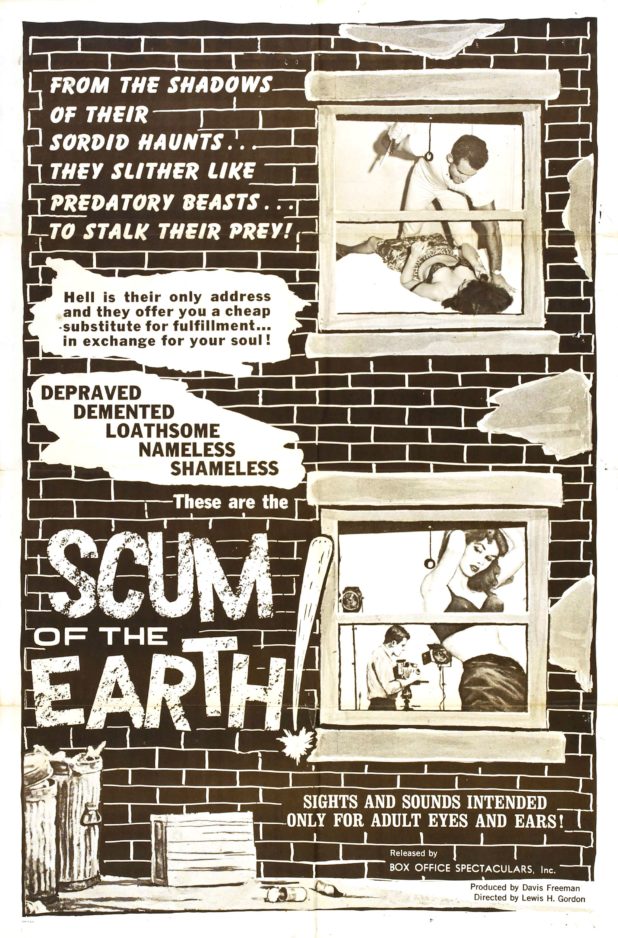
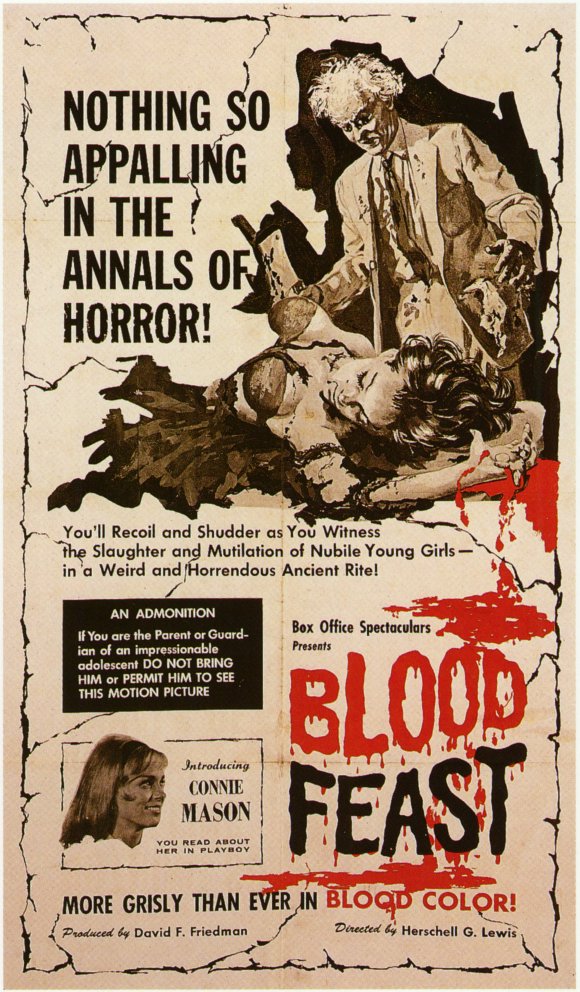
In 1964, the Supreme Court again weighed in on the issue of film censorship with the highly significant landmark case, Jacobellis v. Ohio. It was this case, which was over the showing of the French film Les Amants (The Lovers), where Justice Potter Stewart, when trying to define pornography, made the famous, oft-repeated and mocked statement: “I know it when I see it.”
The Jacobellis case, which was again argued by Ephraim London, applied the liberal Roth test to film, meaning now as long as a film had “socially redeeming value,” and its “overall effect” was not to “appeal to prurient interest,” it was legal and could not be suppressed.
Local censors’ hands were now somewhat tied by the Supreme Court. Hollywood, on the other hand, was still ultimately beholden to the Legion of Decency and the Production Code, and so it went into all out assault on them both.
In 1964 alone, the Legion faced by far more Code breaking films than any previous year. “34 films, of which 20 were major Hollywood productions,” Monsignor Thomas Little of the Legion reported at the time, “would have been released with scenes employing nudity,” had his organization not successfully pressured them to edit.20
There was one film that year that wasn’t be dismissed so easily though: The Pawnbroker, which was centered around the Holocaust. The Jews cleverly weaved the nudity into scenes that they could claim were “necessary to the movie.”21
This being a Holocaust film, the moral responsibility was entirely flipped on its head: the Jews were not in the wrong for wanting to put nudity on the big screen, the censors were in the wrong for condemning it. It was “art,” they argued, not smut, and the Holocaust is a deeply emotional topic for the poor, innocent Jews who had just suffered so much at the hands of the Nazis (see footnote).22
Though thoroughly intimidated by the Jews’ Holocaust guilt-tripping, the Production Code Administration and the Legion nevertheless both rejected The Pawnbroker, recognizing that allowing it would be the first step on a slippery slope: “If we were to agree to that, how could we hold back the next one?”23
The Jews released the film anyway, uncut and without Code approval, through Allied Artists, which was controlled at the time by the Jewish Mirisch family. The Jewish producer of The Pawnbroker, Ely Landau, then appealed the film to the board of the MPAA. The board overturned the prior ruling and awarded the movie a seal, claiming the “sole exception granted The Pawnbroker is to be viewed as a special and unique case and in no way setting a precedent.”24
This, of course, was nonsense, and everybody knew it. The Pawnbroker “exception” set off a string of events that saw the Production Code completely abandoned within five years. It was replaced by the MPAA ratings system, which is still in use today, though it has been altered a bit throughout the years. Initially, the ratings system was: G for General, M for Mature, R for Restricted, and X for not rated.
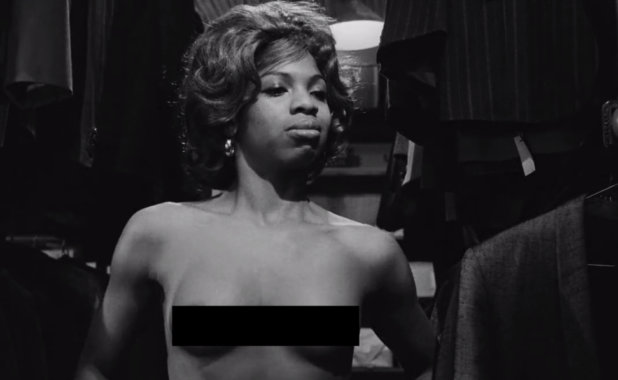 Negress prostitute in (((The Pawnbroker))) – the first nude scene ever to pass Code approval.
Negress prostitute in (((The Pawnbroker))) – the first nude scene ever to pass Code approval.
Michael Medved, with his book Hollywood vs. America, gives us many astonishing statistics about these crucial years, such as the following:
Theater profits were a steady 40 to 49 million a week for 12 years prior to the beginning of the dissolution of the Code (1953-1965). The numbers then dropped from 44 million in 1965, to 17.5 million in 1969.25
That is almost a full two-thirds loss of theatergoers and profit. From 1966 to 1967 alone, it went from 38 million to 17.8 million – well over a 50% drop in one year!26
Medved goes on to provide data that prove unequivocally that G-rated movies make an overwhelmingly larger monetary return than others (more than twice as much as R-rated movies on average, with PG-13 and PG-rated movies falling pretty evenly in between).27 Yet the producers have continuously made more and more R-rated films and less G-rated ones, in spite of the millions upon millions – possibly billions – of guaranteed profits going out the window.
Even foul language, Medved reveals, is shown to be rejected by “huge majorities of potential moviegoers” in “innumerable surveys,” yet it has only, as we all well know, gotten more and more offensive over time.28
Medved is a Jew himself, and as such is a staunch apologist for his tribe’s role in Hollywood. He feigns ignorance as to why his own data shows what it does, choosing to place the blame on “liberalism,” but those of us with the PC blinders off, who are willing to deploy even a modicum of common sense, know there can only be one possible explanation for this phenomenon: the Jews are more concerned with demoralizing society and pushing their own ethnic and political agenda than they are in making profits.
And we all know how much the Jews love profits.
Those figures (and Medved’s book in general), are in and of themselves proof that the Jews are using film as a weapon to deliberately attack the morality of gentile society (just as they admittedly do with outright hardcore pornography, as we’ll see in part 9). This is not conjecture by an anti-Semite, but an incontrovertible fact, thoroughly documented by a Jew – and it needs to be understood.

To draw further contrast between these years, it’s worth noting that in 1965 the Academy Award for best picture went to the G-rated, family-friendly musical The Sound of Music, and in 1969 – the very first year after the breakdown of the Code – it went to United Artists’ disturbing X-rated film Midnight Cowboy.
Midnight Cowboy was directed by the Jew John Schlesinger, and featured multiple scenes of homosexuality and other perversions, including one where the “cowboy” character (meant to symbolize the quintessential masculine, heterosexual White American male) is forcibly sodomized.
The year 1969 also saw the founding of the first explicit hardcore porn advocacy group, the Adult Film Association of America, of which David Friedman, the aforementioned Jew of sexploitation fame, was elected president five times.
The popularity of sexploitation films had waned quite significantly by that time due to the fact that hardcore porn, featuring actual sex, was now becoming more acceptable.
In January of 1968, the Swedish countercultural sex film I Am Curious (Yellow) had been seized by customs after being imported by the Jew Barney Rosset, who, as we discuss in depth in part 4, had been at the forefront of the major landmark obscenity cases in regard to banned books in the mid-60s (Lady Chatterley’s Lover and Tropic of Cancer, specifically).

I Am Curious (Yellow) featured multiple scenes of nudity and simulated sex, including one where the lead actress is shown kissing a flaccid penis.
Rosset paid Sandrews, the Swedish film company that produced I Am Curious (Yellow), $100,000 in order to secure American distribution rights for the film, and agreed to pay them 30% of its profits. He also promised to pay all legal fees should the film run into trouble, boasting that he “may win for the film industry the same freedom afforded literature in the Lady Chatterley’s Lover case.”29
Being the first movie that featured sex and nudity to be shown in regular theaters, rather than back alley porn theaters, viewers flocked to see I Am Curious (Yellow). By September, 1969, it had already grossed $5 million. A month later it became “the first foreign-language film to top Variety’s list of the top-grossing films.”30
Predictably, the film became the subject of many obscenity trials across the country. It was shown in 53 cities, and contested in 15, ultimately getting banned in about 10 states.

The 2nd U.S. Court of Appeals eventually overturned the New York customs’ ban, but this was not a nationwide ruling, as those, of course, only come from the Supreme Court.
When the Supreme Court did finally hear the case it ended with a 4-4 split. Justice William O. Douglas, who was a radical First Amendment “absolutist,” had recused due to a conflict of interest (some of his anti-censorship writings had been featured in Rosset’s journal, the Evergreen Review).
The split upheld the lower court’s ruling by default, and though this still did not overturn decisions in other parts of the country, it nevertheless spelled the end of the censorship of I Am Curious (Yellow), as it became clear the issue would never be decisively resolved in the censors’ favor.
Altogether the film earned Rosset an astonishing $14 million, but, ironically, by paving the way for true pornography, it undercut the agenda of his publishing company, Grove Press. “I Am Curious (Yellow) was a big success,” he said in an interview,
But it was a disaster for us in many ways. Because we made a lot of money, I went and bought a lot of foreign films—which were no longer commercially viable because all the art theaters had closed down, overnight, in 1970. They had started showing X-rated porno films. There had been a big market for foreign films in this country, and suddenly it was gone. After I Am Curious (yellow) played, that was the end. We killed our own market.31
 Future president Gerald Ford holding up the issue of Evergreen Review which featured the anti-censorship writings of Justice William O. Douglas, in a move to have him impeached from the Supreme Court.
Future president Gerald Ford holding up the issue of Evergreen Review which featured the anti-censorship writings of Justice William O. Douglas, in a move to have him impeached from the Supreme Court.
In the first post-Curious above ground pornographic films – Andy Warhol’s Blue Movie (1969), and Mona the Teenage Nymph (1970) – the sex was shown while the man had a flaccid penis, carefully following the I am Curious (Yellow) precedent, and then it progressively became more graphic.
By 1972, the infamous, full-on hardcore porno Deep Throat was a nationwide theatrical blockbuster, earning over $100 million, and staying on Variety‘s list of top 10 highest-grossing movies for 48 weeks. Deep Throat was soon followed by the similarly successful Behind the Green Door (1972), and The Devil in Miss Jones (1973).
A nation-wide backlash to these and other liberal excesses swept conservative Republican Richard Nixon into power in 1969, and there was a last ditch effort to stem the tide of hardcore pornography.
This effort, which culminated in the Nixon-stacked Supreme Court’s 1973 Miller decision – the precedent of which still stands as the test for obscenity today – and the preeminent Jewish role in hardcore pornography from then up to the present time, will be the topic of part 9.
If you enjoy this series, please consider supporting the author by purchasing a print copy.
Notes
- Henry Ford, The International Jew – The World’s Foremost Problem, 1922, p.218
- Matthew Bernstein, Controlling Hollywood: Censorship and Regulation in the Studio Era, 1999, p.20-21
- Neal Gabler, An Empire of Their Own: How the Jews Invented Hollywood, 1988, p.64
- Mutual Film Corporation v. Industrial Commission of Ohio, 236 U.S. 230 (1915)
- Ed Roberts, The Sins of Hollywood, 1922, p.77 (For a highly listenable audio version see here.)
- Ford, p.239
- Ibid., p.244
- Fredrick S. Lane III, Obscene Profits: The Entrepeneurs of Pornography in the Cyber Age, 2001, p.22
- Gregory D. Black, Hollywood Censored: Morality Codes, Catholics, and the Movies, 1994, p.70
- Leonard J. Leff & Jerold L. Simmons, The Dame in the Kimono: Hollywood, Censorship, and the Production Code, 1990, p.47
- Ibid., p.165
- Ibid., p.163
- Ibid., p.172
- Laura Wittern-Keller & Raymond J. Haberski Jr., The Miracle Case: Film Censorship and the Supreme Court, 2008, p.59
- Richard Kuh, Foolish Figleaves? Pornography in-and out of-Court, 1968, p.4
- Foster Hirsch, Otto Preminger: The Man Who Would be King, 2007, p.191
- Ibid., p.197
- Leff & Simmons, p.199
- Ibid., p.203
- E. Michael Jones, John Cardinal Krol and the Cultural Revolution, 1995, p.303
- See Leonard L. Jeff, ‘Hollywood and the Holocaust: Remembering the Pawnbroker,’ American Jewish History, 1996
- This wouldn’t be the last time the Jews used their Holocaust story as leverage to get nudity approved on the screen. In fact, it was how they did it every time. The first time nudity was ever shown on television was in the Holocaust TV series War and Remembrance in 1978 (see here and here), and the first movie ever to be shown on TV with nudity – during “primetime,” to 65 million people, many of them children – was none other than Schindler’s List, in 1997. It has aired unedited ever since (see here and here).
- Jones, p.325
- Thomas Doherty, Hollywood’s Censor: Joseph L. Breen and the Production Code Administration, 2009, p.331
- Michael Medved, Hollywood vs. America: Popular Culture and the War on Traditional Values, 1992, p.277
- Ibid., p.283
- Ibid., p.287
- Ibid., p.291
- Eric Schaefer et al., Sex Scene: Media and the Sexual Revolution, 2014, p.107
- Loren Glass, Counterculture Colophon: Grove Press, the Evergreen Review, and the incorporation of the Avant-Garde, 2013, p.207
- Ken Jordan, ‘Barney Rosset, The Art of Publishing No. 2,’ The Paris Review
